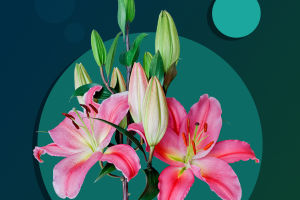Tulips are perennial herbs with bulbs of the genus Tulip in the lily family. Tulips flower from April to May.
The tulip is the national flower of the Netherlands and Hungary.
Tulips are long-lasting flowers and prefer a sunny, sheltered climate with warm, humid winters and cool, dry summers. 8°C and above will grow normally, and can generally withstand temperatures as low as -14°C.
Tulips are very hardy, and in cold areas where there is a thick snow cover, the bulbs can overwinter in the open, but they are afraid of the heat, and if summer comes early and is very hot.
It will be difficult for the bulbs to survive the summer after they have gone dormant.
Tulips require a humus-rich, loose, fertile, well-drained, slightly acidic sandy loam.
Tulips avoid alkaline soils and successive crops.
The tulip is a much-loved flower, synonymous with nobility and elegance in Europe, and is now loved all over the world.
The different colors of tulips have different meanings.
The red tulip represents a strong personality, positive and open-minded. It is lively, affectionate, and outgoing.
They are quick to speak and act without thinking.
People with a red personality tend to present themselves as energetic and optimistic by nature, and you won't let setbacks get them down.
The first is a confession of love, a declaration of love, joy, and love.
The blue tulip signifies eternal, delicate love and its flower language is one of mysterious melancholy, precious treasures, and laurels of honor.
Blue tulips are not often found and giving them to a girl means that she is rare and precious in her heart.
The blue color also gives a sense of melancholy and looks very dreamy, making it very popular with girls.
Blue tulips can be given to a lover, a friend, or a quiet and elegant colleague as a way of expressing your admiration for her.
Yellow tulips indicate hopeless love and a hopeless relationship. In Europe and the United States, yellow flowers are usually not very popular and the language of the flowers in question is rather negative.
But how can you not love the bright yellow color that embodies the joy of spring and the striking brightness of the flower?
This is why some people consider yellow tulips to be a symbol of elegance, preciousness, wealth, affection, and friendship.
Pink tulips represent a lovely, youthful, sensual, and energetic feeling, just a casual glance that exudes a charm that makes you feel comfortable at the sight.
However, there is a strong tendency to escape from reality.
The black tulip is not yet pure black, but there will always be those who constantly seek the mythical black tulip, and this contains what is surely a pure love of breeders.
After all, the tulip itself is an enchanting floral material.
The Dutch have also given their tulips interesting names.
Dark Night, Midnight Queen, and Black Knight, for example, are all quite mysterious.
Tulip flowers and leaves contain a toxic alkaloid with physiological effects similar to those of cefadine.
Tulip has an inhibitory effect on Bacillus subtilis. The tulip juice remains antibacterial against Staphylococcus aureus after passing through cationic and anion-exchange resins.
The roots and flowers of the tulip are used as a sedative.
The flowers have a toxic alkali that can make you feel dizzy after an hour or two of exposure and can cause severe poisoning.


